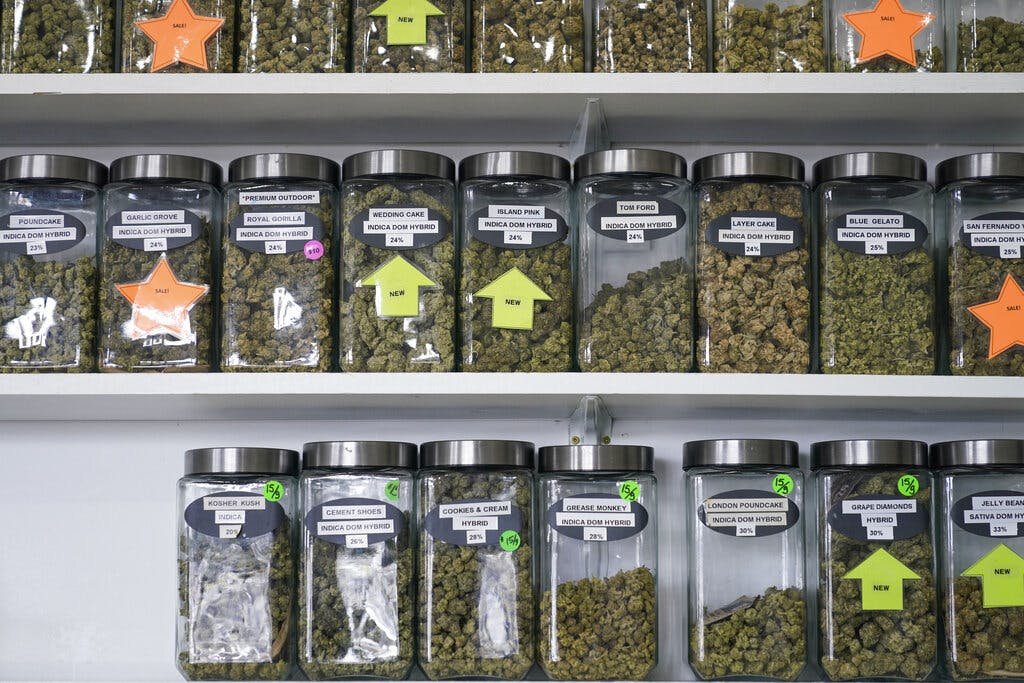Whatever Happened to ‘Just Say No’?
Here’s an idea for New York: devote some of the $1.9 billion the state receives annually in tobacco lawsuit settlement funds to public health education that’s truly focused on health.

President Biden’s decision to pardon some 6,500 federal offenders convicted of marijuana possession is much more than a legal action, even if it is perhaps justified to clear employment barriers for minor felons. It’s a signal sent from the nation’s highest office that smoking pot is no big deal.
Although Mr. Biden tipped his hat to the dangers of pot — noting, in passing, the need for “important limitations on trafficking, marketing and underage sales of marijuana” — we see no signals from the White House emphasizing how harmful smoking pot can be, especially for the young.
The strange and inconsistent mores of our time are no better illustrated than our double-standard for pot and tobacco. New York state, set to roll out retail cannabis sales and already encouraging its farms to grow-their-own, spends some $39 million annually on the state health department’s Tobacco Control Program, which includes graphic and gruesome television ads featuring those dying from lung cancer.
Notably, tobacco use in New York state has dropped to an all-time low — decreasing to 12.9 percent of adults in 2020 from 14.1 percent of adults in 2017. Cigarette smoking is well worth discouraging — but it is not mind-altering, nor does it put others at risk of those driving while high.
The Centers for Disease Control and Prevention is expansive on the dangers of cannabis. Its language is chilling: “People who use marijuana are more likely to develop temporary psychosis and long-lasting mental disorders, including schizophrenia… The association is stronger in people who start using marijuana at an earlier age and use marijuana more frequently.”
To date, however, the New York state Office of Cannabis Control has focused on celebrating the “social justice” dimensions of legalization by allowing ex-drug dealers to go to the head of the line to obtain retail licenses. It’s touted gains for cannabis farmers, and hundreds of millions in new state tax revenues.
Its efforts aimed at public health education on marijuana have been limited to what it’s calling “Cannabis conversations.” These limit themselves to explaining the state law — how can I grow cannabis? How can I sell it? — rather than cautioning against its use. The closest the state has come to public health education has been subway ads reminding that one must be 21 to smoke dope.
This is not to say that any public education campaign aimed at discouraging pot use would be easy to realize. Previous efforts have clearly been counterproductive. Baby Boomers still mock the clips of the 1936 film “Reefer Madness” they may have seen in high school health class.
More recently, there has been the Drug Awareness Resistance Education program, the elementary school-based program that brought police to classrooms nationwide at a cost of three-quarters of a billion dollars annually. The National Institutes of Health labeled it “ineffective.” That has not prevented it from continuing, with government support.
New and more effective approaches to discouraging drug use will, of course, run counter to New York’s promises that pot will bring in a tax revenue windfall and uplift disadvantaged entrepreneurs.
In other words, it would take a new mindset in Albany and other state capitals to think it’s important to warn citizens away from drugs — just as it would take a new legislative psychology to discourage casino gambling.
But here’s one idea for New York: devote some of the $1.9 billion the state receives annually in tobacco lawsuit settlement funds to public health education that’s truly focused on health. Rather than diverting all but $39 million to the overall state budget.
A drug education program would remind the public that drug use is dangerous, that the CDC warns that — although it’s limited — there is some “evidence suggesting that using marijuana increases the risk of using other drugs.”
One can envision a television spot that features active shooters who also used pot and the heartbroken parents of victims, one that helps distinguish between libertine ideas of pleasure and the happiness that stems from personal responsibility and achievement, one that reminds us of President Clinton’s good advice, especially for the young: don’t inhale.

